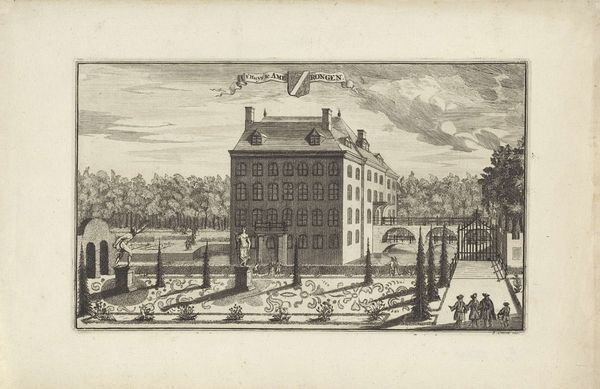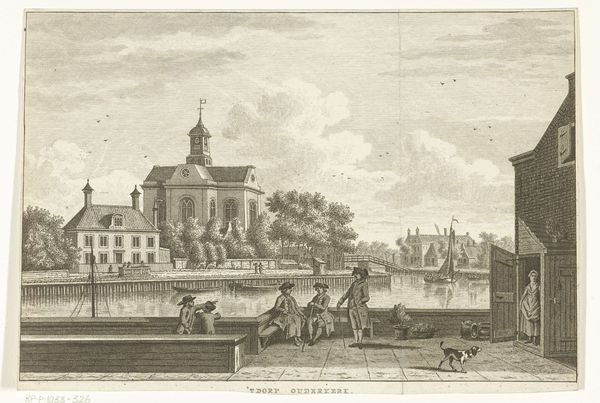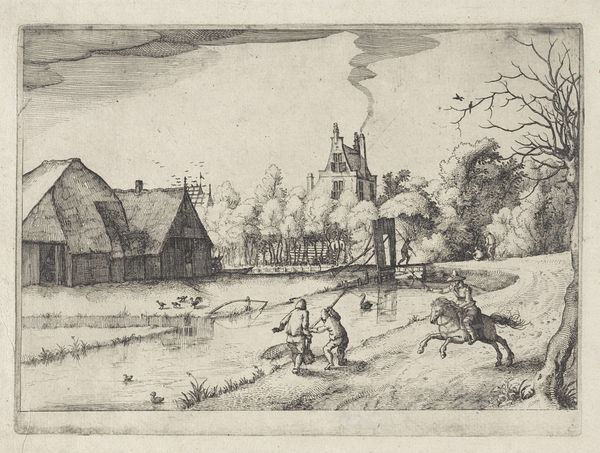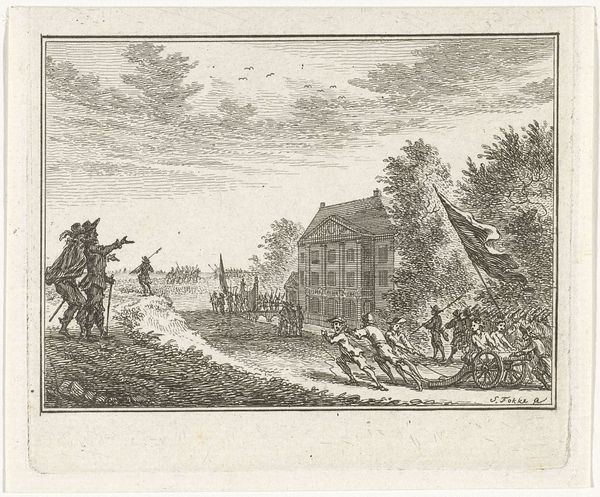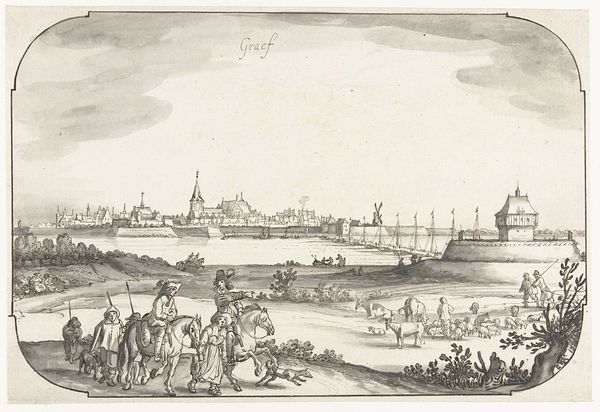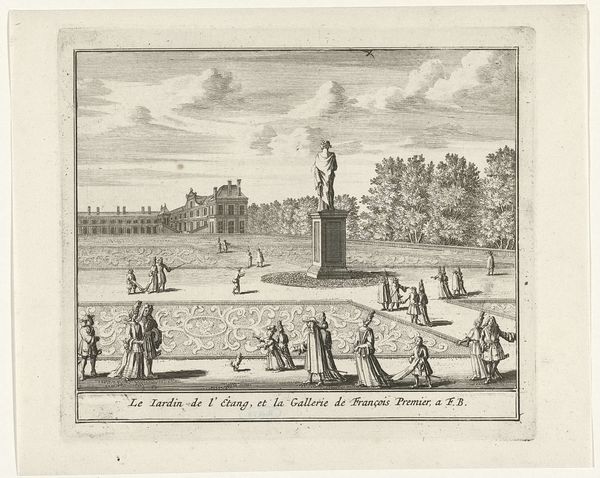
print, engraving
#
neoclassicism
# print
#
old engraving style
#
landscape
#
figuration
#
line
#
14_17th-century
#
cityscape
#
history-painting
#
engraving
Dimensions: height 175 mm, width 276 mm
Copyright: Rijks Museum: Open Domain
Curator: Ah, an intriguing glimpse into the past! This engraving, dating from 1784, depicts the "Kastijding van de Arnhemse burgemeesters Bentinck en Brantsen" which translates to "The Chastisement of the Arnhem Mayors Bentinck and Brantsen." It's by an anonymous artist, capturing a specific moment in the history of Arnhem. Editor: My first thought is...chaos, beautifully rendered chaos! There’s a bonfire, people brandishing what looks like brooms, and just an overall sense of societal… well, upheaval! I’m curious to know exactly what these mayors did to deserve this treatment. Curator: Indeed. The brooms symbolize a cleansing, a sweeping away of perceived corruption or injustice. This relates to the Patriot movement that wanted to reinstate old rights and dismiss aristocratic magistrates like those being "chastised". We must remember that prints like this were powerful tools of propaganda, shaping public opinion and mobilizing action during a period of political instability. Editor: Ah, the trusty broom as a symbol of "out with the old!" Gets the point across, doesn't it? It strikes me that there is so much symbolism here: not just the brooms, but even the way the figures are arranged; it makes me wonder about their historical significance and impact on collective memory. Do we know who the artist might have been trying to persuade? Curator: Considering that it has a narrative, figural focus, one can tell the artist perhaps worked with allegories, creating new artistic conventions during the height of Neoclassicism. Beyond being a direct depiction of an event, engravings like this tapped into the broader anxieties and aspirations of the public at the time. A cultural touchstone, really. The work invites a reflection of how history is shaped. Editor: Yes, history always has so many subjective sides...The cityscape in the backdrop almost feels like a detached observer to this frenzied event unfolding in the foreground. Do you think that anonymity gives it more power? It removes the artist’s ego from the equation. It becomes pure message, pure collective action! Curator: In a way, yes, although there could be a variety of reasons behind the anonymity of an artwork: it may be lost to time or obscured because it may cause harm or prosecution, etc. Still, if its meaning reverberates across different eras, then it served its symbolic, historical, and cultural function! Editor: Well, it’s certainly given me a lot to ponder about the power of symbols, even today. Food for thought...and maybe a little spring cleaning of my own.
Comments
No comments
Be the first to comment and join the conversation on the ultimate creative platform.

